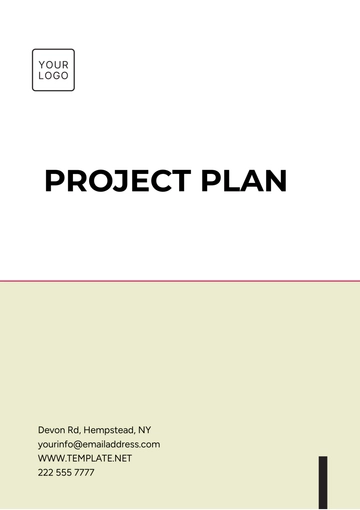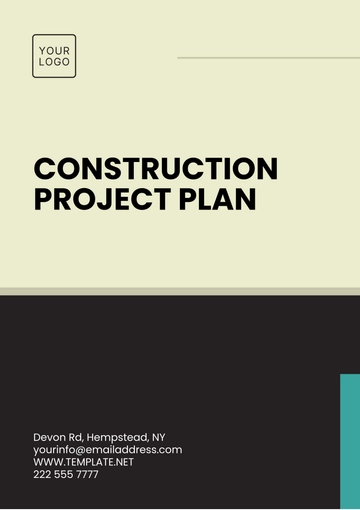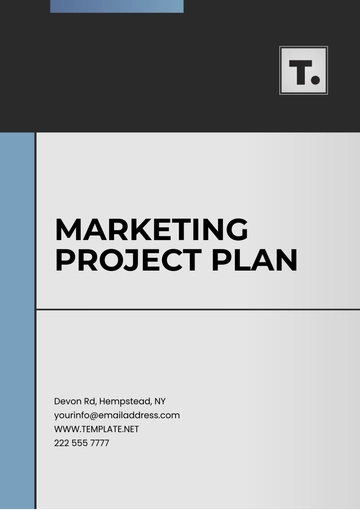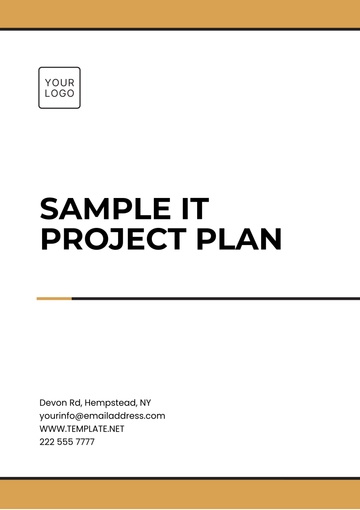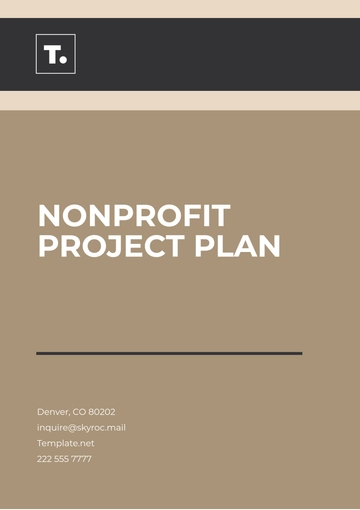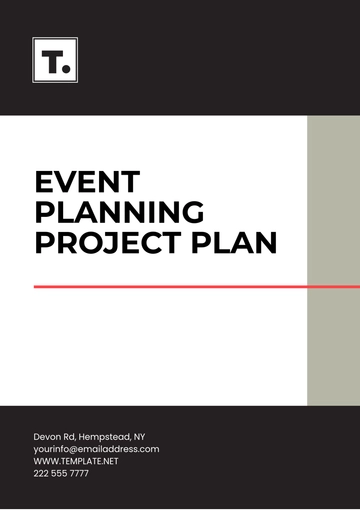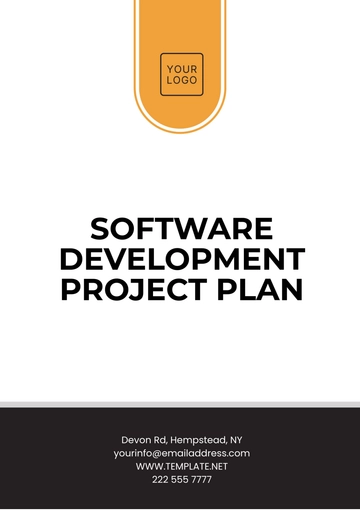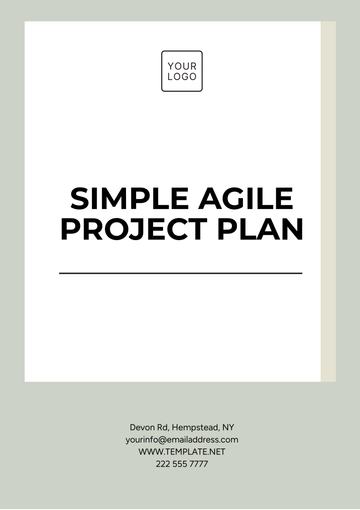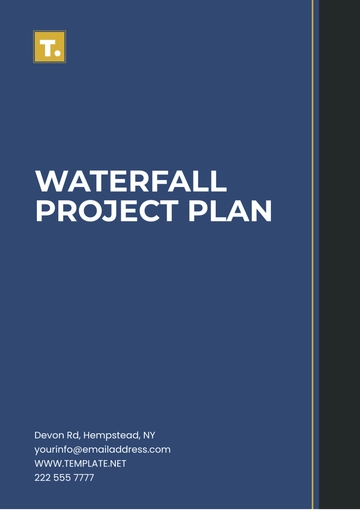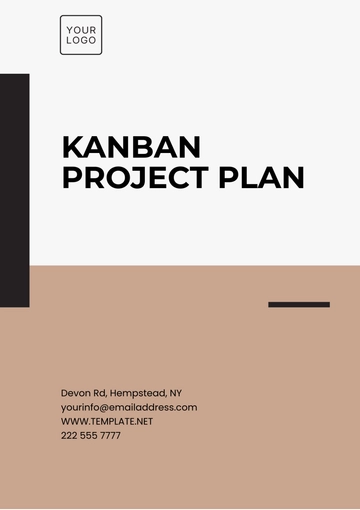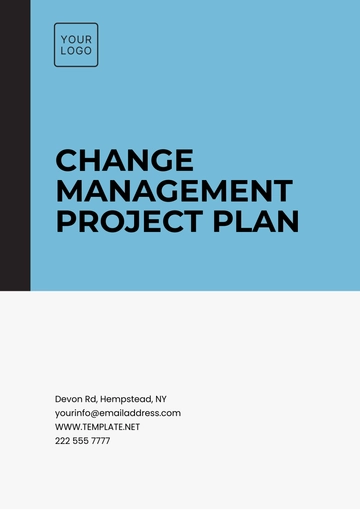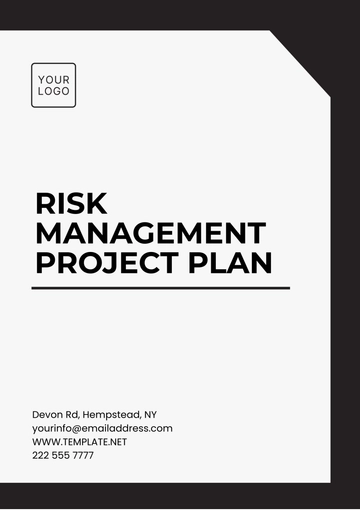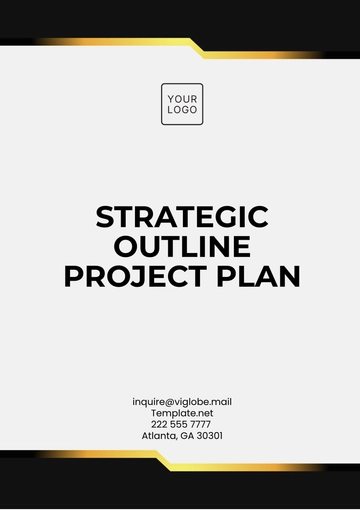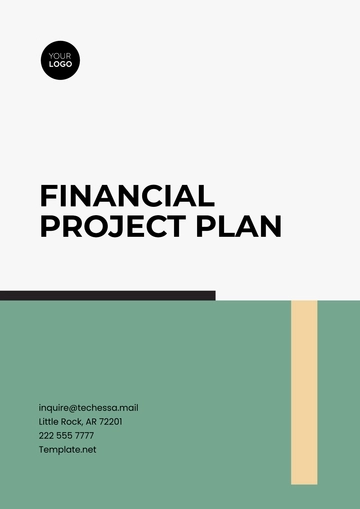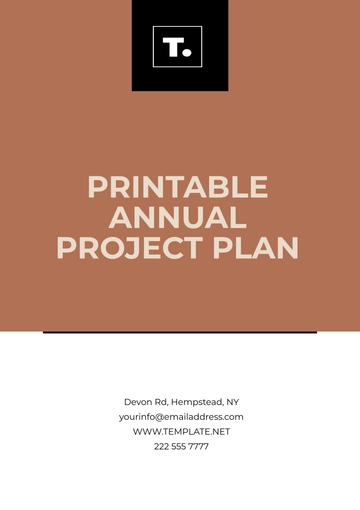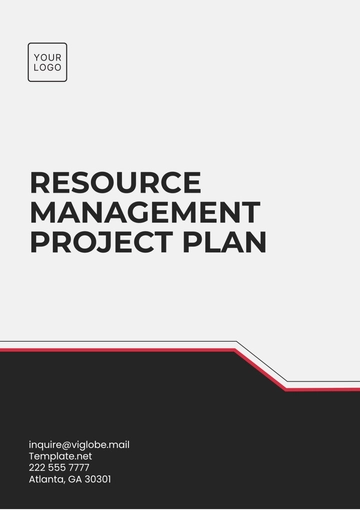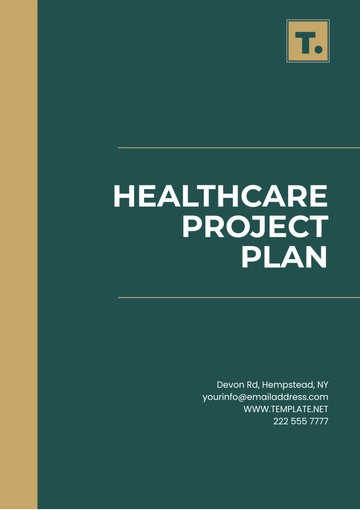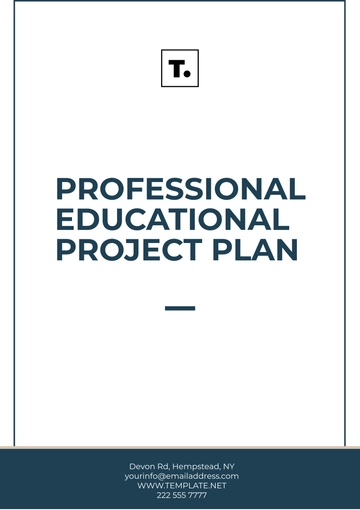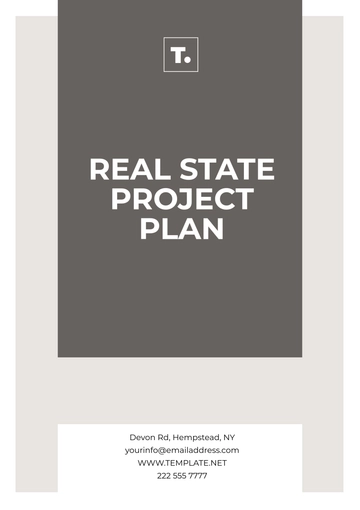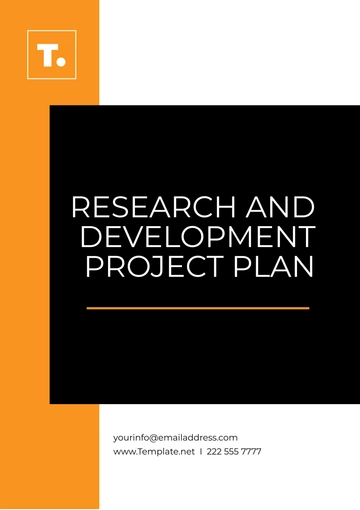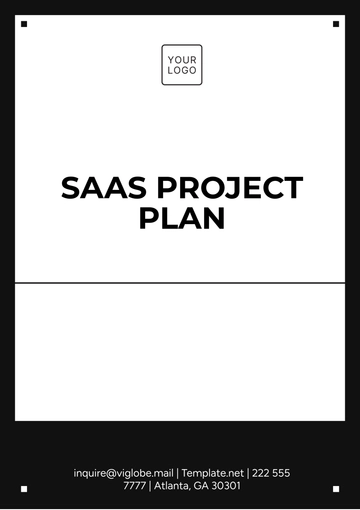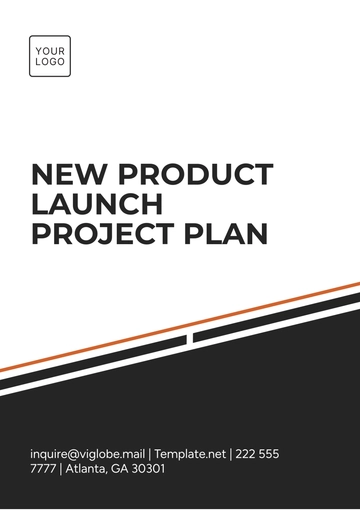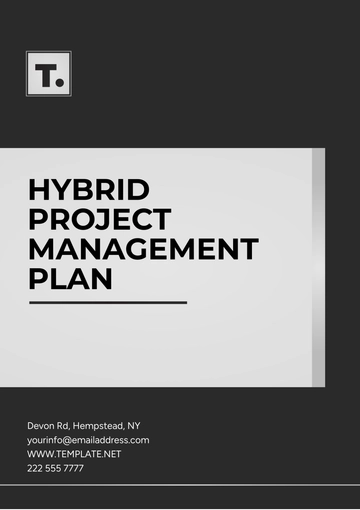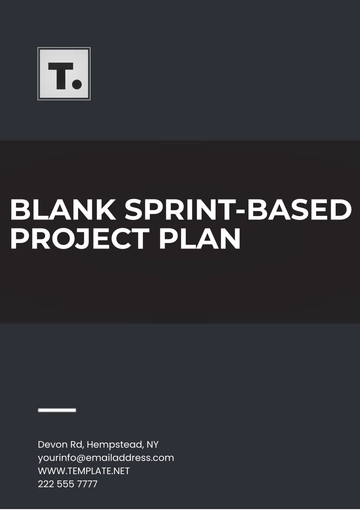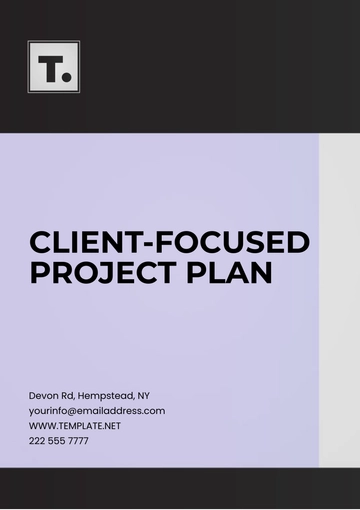Free Construction Project Plan
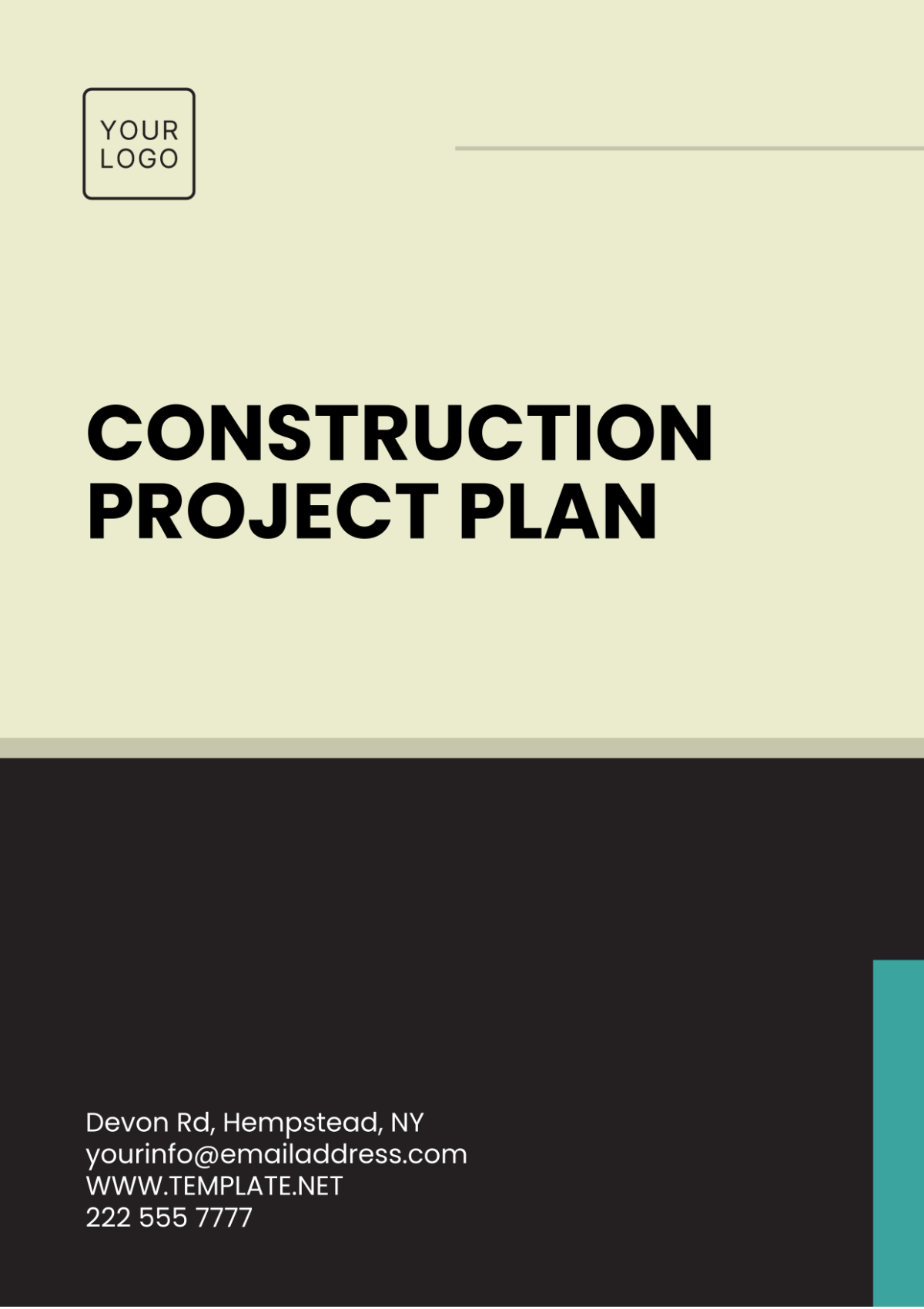
Department : | [Your Department] |
Date : | [Current Date] |
I. Introduction
In response to the growing needs of its residents for recreational and educational facilities, [Town Name] has initiated a project to construct a new community center. This Construction Project Plan outlines the comprehensive strategy devised by [Town Name] Council to oversee the construction process efficiently and effectively. The plan encompasses various crucial aspects such as budget allocation, contractor selection, and permit acquisition to ensure the successful completion of the project.
II. Scope Definition and Objectives
The primary objective of this project is to construct a modern community center that caters to the diverse needs of [Town Name] residents. The scope of the project includes:
Designing and constructing a state-of-the-art facility equipped with recreational amenities such as gymnasiums, swimming pools, and sports fields.
Incorporating educational facilities including classrooms, libraries, and computer labs.
Ensuring compliance with local building codes, safety regulations, and environmental standards.
Providing accessibility features to accommodate individuals with disabilities.
Establishing landscaping and outdoor recreational areas surrounding the community center.
III. Schedule and Timeline
A detailed schedule has been developed to guide the construction process from start to finish. The timeline is as follows:
Phase | Duration | Start Date | End Date |
|---|---|---|---|
Planning and Design | 6 months | January 1, 2050 | July 1, 2050 |
Permit Acquisition | 2 months | July 1, 2050 | September 1, 2050 |
Construction | 12 months | September 1, 2050 | September 1, 2051 |
Inspection and Testing | 1 month | September 1, 2051 | October 1, 2051 |
Grand Opening | - | October 1, 2051 | - |
IV. Resource Allocation and Management
Proper allocation of resources is essential for the successful execution of the project. The following resources will be required:
Funding: The budget for the project is estimated at $5 million, allocated from the town's budget and potentially supplemented by grants or fundraising efforts.
Personnel: A project manager will be appointed to oversee the construction process, supported by a team of architects, engineers, contractors, and subcontractors.
Materials: High-quality construction materials will be sourced from reputable suppliers to ensure the durability and longevity of the facility. This includes sustainable building materials to align with the town's environmental goals.
Equipment: Construction equipment and machinery will be rented or purchased as needed for various stages of the project. This includes heavy machinery for excavation and construction, as well as specialized equipment for interior finishing work.
V. Risk Management
Identifying and mitigating risks is crucial to minimizing potential disruptions and ensuring the project stays on track. The following risks have been identified, along with corresponding mitigation strategies:
A. Budget Overruns
Regular budget monitoring, contingency planning, competitive bidding, and negotiating with contractors will help manage and control costs.
Budget Item | Estimated Cost |
|---|---|
Planning and Design | $500,000 |
Permit Acquisition | $50,000 |
Construction Materials | $2,000,000 |
Labor Costs | $1,500,000 |
Equipment Rental/Purchase | $300,000 |
Contingency Reserve (10%) | $435,000 |
Miscellaneous Expenses | $215,000 |
Total Estimated Budget | $5,000,000 |
The contingency reserve of 10% is included to address unforeseen expenses and mitigate the risk of budget overruns. Regular monitoring and evaluation of expenses will be conducted to ensure that the project stays within the allocated budget.
B. Delays in Permit Acquisition
To mitigate delays in obtaining necessary permits, the project team will establish clear communication channels with regulatory authorities, expedite permit applications, and proactively address any compliance issues.
C. Adverse Weather Conditions
The construction schedule will be flexible to accommodate weather-related disruptions. Contingency plans will be in place to reschedule outdoor activities during inclement weather and adjust timelines accordingly.
D. Supply Chain Disruptions
Diversifying suppliers and maintaining buffer stocks of critical materials will help mitigate the impact of supply chain disruptions such as shortages or delays in deliveries.
VI. Quality Assurance and Control
Ensuring the quality of construction is paramount to the success and longevity of the community center. Quality assurance and control measures will include:
Regular Inspections: Scheduled inspections will be conducted at various stages of construction to verify compliance with design specifications, building codes, and safety standards.
Quality Standards: Strict adherence to quality standards and best practices will be enforced throughout the project, with non-compliance addressed promptly.
Testing and Certification: Materials and construction techniques will undergo rigorous testing and certification by accredited laboratories to ensure durability, safety, and sustainability.
Continuous Improvement: Feedback mechanisms will be established to solicit input from stakeholders and identify areas for improvement throughout the construction process.
VII. Communication Plan
Effective communication is essential for keeping all stakeholders informed and engaged throughout the construction project. The communication plan will include:
Stakeholder Identification: Identify all stakeholders, including town officials, residents, project team members, contractors, and regulatory authorities.
Communication Channels: Establish clear communication channels, including regular meetings, email updates, project management software, and a dedicated project website or bulletin board.
Reporting Structure: Define reporting protocols and frequency to ensure timely dissemination of information and progress updates.
Issue Resolution: Establish procedures for addressing concerns, resolving conflicts, and escalating issues as necessary to maintain transparency and accountability.
Feedback Mechanisms: Provide avenues for stakeholders to provide feedback, ask questions, and express concerns throughout the project lifecycle.
- 100% Customizable, free editor
- Access 1 Million+ Templates, photo’s & graphics
- Download or share as a template
- Click and replace photos, graphics, text, backgrounds
- Resize, crop, AI write & more
- Access advanced editor
Enhance and Discover the Construction Project Plan Template by Template.net: a powerhouse solution for project managers. This editable and customizable template streamlines your construction projects effortlessly. Crafted for efficiency, it's editable in our Ai Editor Tool, ensuring seamless customization. Elevate your planning game with this versatile tool, designed for success.
